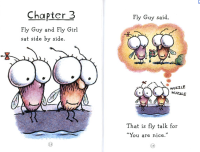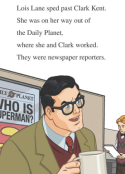Okay, technically, it’s one winner and the four honor books. I don’t know about you, but on lists like this I almost always find that I like one of the runners-up more than the winner.
Also, I am somewhat pained to admit that I’ve only read one of the five Newbery books. I won’t say which one because, honestly, I wasn’t crazy about it. Nevertheless, the winner looks like a good one. If you’ve read any of them, I’d love to hear what you thought about it.

“Moon over Manifest,” written by Clare Vanderpool, is the 2011 Newbery Medal winner. The book is published by Delacorte Press, an imprint of Random House Children’s Books, a division of Random House, Inc.
“Abilene Tucker feels abandoned. Her father has put her on a train, sending her off to live with an old friend for the summer while he works a railroad job. Armed only with a few possessions and her list of universals, Abilene jumps off the train in Manifest, Kansas, aiming to learn about the boy her father once was.
Having heard stories about Manifest, Abilene is disappointed to find that it’s just a dried-up, worn-out old town. But her disappointment quickly turns to excitement when she discovers a hidden cigar box full of mementos, including some old letters that mention a spy known as the Rattler. These mysterious letters send Abilene and her new friends, Lettie and Ruthanne, on an honest-to-goodness spy hunt, even though they are warned to “Leave Well Enough Alone.”
Abilene throws all caution aside when she heads down the mysterious Path to Perdition to pay a debt to the reclusive Miss Sadie, a diviner who only tells stories from the past. It seems that Manifest’s history is full of colorful and shadowy characters—and long-held secrets. The more Abilene hears, the more determined she is to learn just what role her father played in that history. And as Manifest’s secrets are laid bare one by one, Abilene begins to weave her own story into the fabric of the town.” (Booklist)
Four Newbery Honor Books also were named:

“Turtle in Paradise,” by Jennifer L. Holm and published by Random House Children’s Books, a division of Random House, Inc..
“In 1935, jobs are hard to come by, and Turtle’s mother is lucky to find work as a live-in housekeeper. When she learns that her employer can’t stand children, she sends her 11-year-old daughter from New Jersey to Key West to live with relatives. Turtle discovers a startlingly different way of life amid boisterous cousins, Nana Philly, and buried treasure. This richly detailed novel was inspired by Holm’s great-grandmother’s stories. Readers who enjoy melodic, humorous tales of the past won’t want to miss it.” (Booklist)

“Heart of a Samurai,” written by Margi Preus and published by Amulet Books, an imprint of ABRAMS.
“In 1841, a Japanese fishing vessel sinks. Its crew is forced to swim to a small, unknown island, where they are rescued by a passing American ship. Japan’s borders remain closed to all Western nations, so the crew sets off to America, learning English on the way.
Manjiro, a fourteen-year-old boy, is curious and eager to learn everything he can about this new culture. Eventually the captain adopts Manjiro and takes him to his home in New England. The boy lives for some time in New England, and then heads to San Francisco to pan for gold. After many years, he makes it back to Japan, only to be imprisoned as an outsider. With his hard-won knowledge of the West, Manjiro is in a unique position to persuade the shogun to ease open the boundaries around Japan; he may even achieve his unlikely dream of becoming a samurai.” (Booklist)

“Dark Emperor and Other Poems of the Night,” written by Joyce Sidman, illustrated by Rick Allen and published by Houghton Mifflin Books for Children, Houghton Mifflin Harcourt.
“Like Sidman’s Caldecott Honor Book, Song of the Water Boatman and Other Pond Poems (2005), this picture book combines lyrical poetry and compelling art with science concepts. Here, poems about the woods at night reveal exciting biology facts that are explained in long notes on each double-page spread. In a poem about crickets, lines describe “the raucous scrape / of wing against wing,” while a prose passage explains that the cricket’s wing has a serrated “file,” which the cricket rubs against a hard “scraper” on its other wing to attract a mate, creating a sound called “stridulation” that can swell to deafening levels. The facts are further reinforced in the accompanying picture, which shows the small file on a cricket’s wing.
In an opening note, Allen explains his elaborate, linoleum-block printmaking technique, and each atmospheric image shows the creatures and the dense, dark forest with astonishing clarity. Looking closely at a picture of a snail, for example, readers will see the physical detail, described in an adjacent poem, in the small animals’ moist, sluglike bodies, “riding on a cushion of slime.” The thrilling title poem captures the drama of predator and prey: a mouse in the undergrowth flees an owl’s “hooked face and / hungry eye.” A final glossary concludes this excellent, cross-curricular title.” (Booklist)

“One Crazy Summer,” by Rita Williams-Garcia and published by Amistad, an imprint of HarperCollins Publishers.
“Eleven-year-old Delphine has only a few fragmented memories of her mother, Cecile, a poet who wrote verses on walls and cereal boxes, played smoky jazz records, and abandoned the family in Brooklyn after giving birth to her third daughter. In the summer of 1968, Delphine’s father decides that seeing Cecile is “something whose time had come,” and Delphine boards a plane with her sisters to Cecile’s home in Oakland. What they find there is far from their California dreams of Disneyland and movie stars. “No one told y’all to come out here,” Cecile says. “No one wants you out here making a mess, stopping my work.”
Like the rest of her life, Cecile’s work is a mystery conducted behind the doors of the kitchen that she forbids her daughters to enter. For meals, Cecile sends the girls to a Chinese restaurant or to the local, Black Panther–run community center, where Cecile is known as Sister Inzilla and where the girls begin to attend youth programs. Regimented, responsible, strong-willed Delphine narrates in an unforgettable voice, but each of the sisters emerges as a distinct, memorable character, whose hard-won, tenuous connections with their mother build to an aching, triumphant conclusion. Set during a pivotal moment in African American history, this vibrant novel shows the subtle ways that political movements affect personal lives; but just as memorable is the finely drawn, universal story of children reclaiming a reluctant parent’s love.” (Booklist)

















 F
F






















